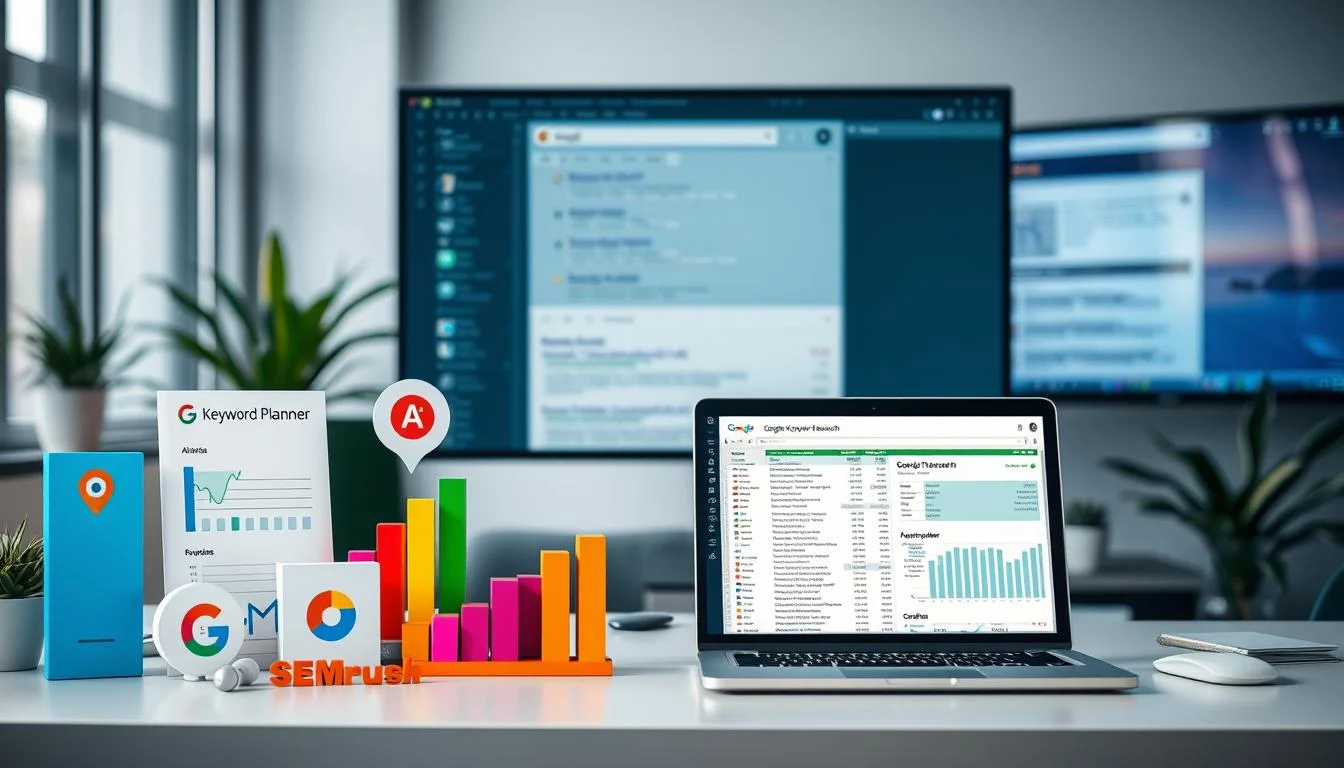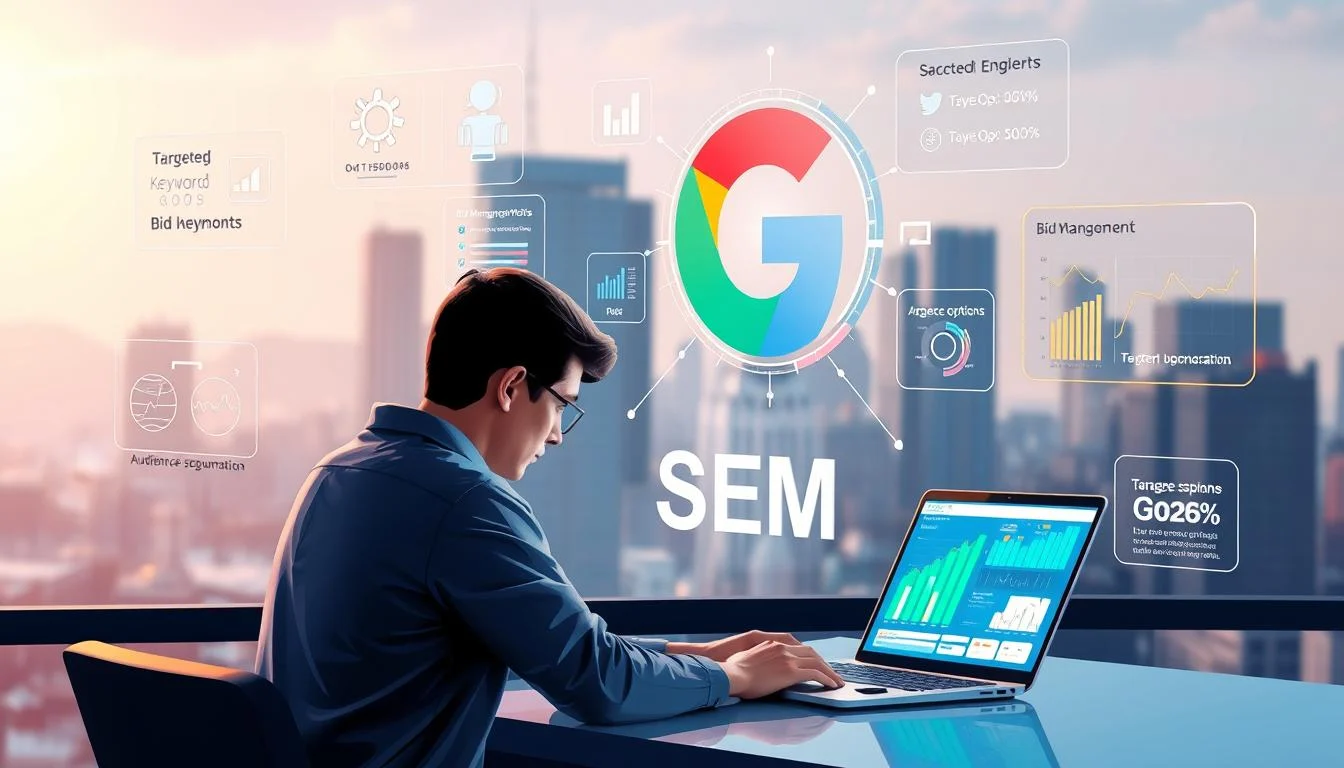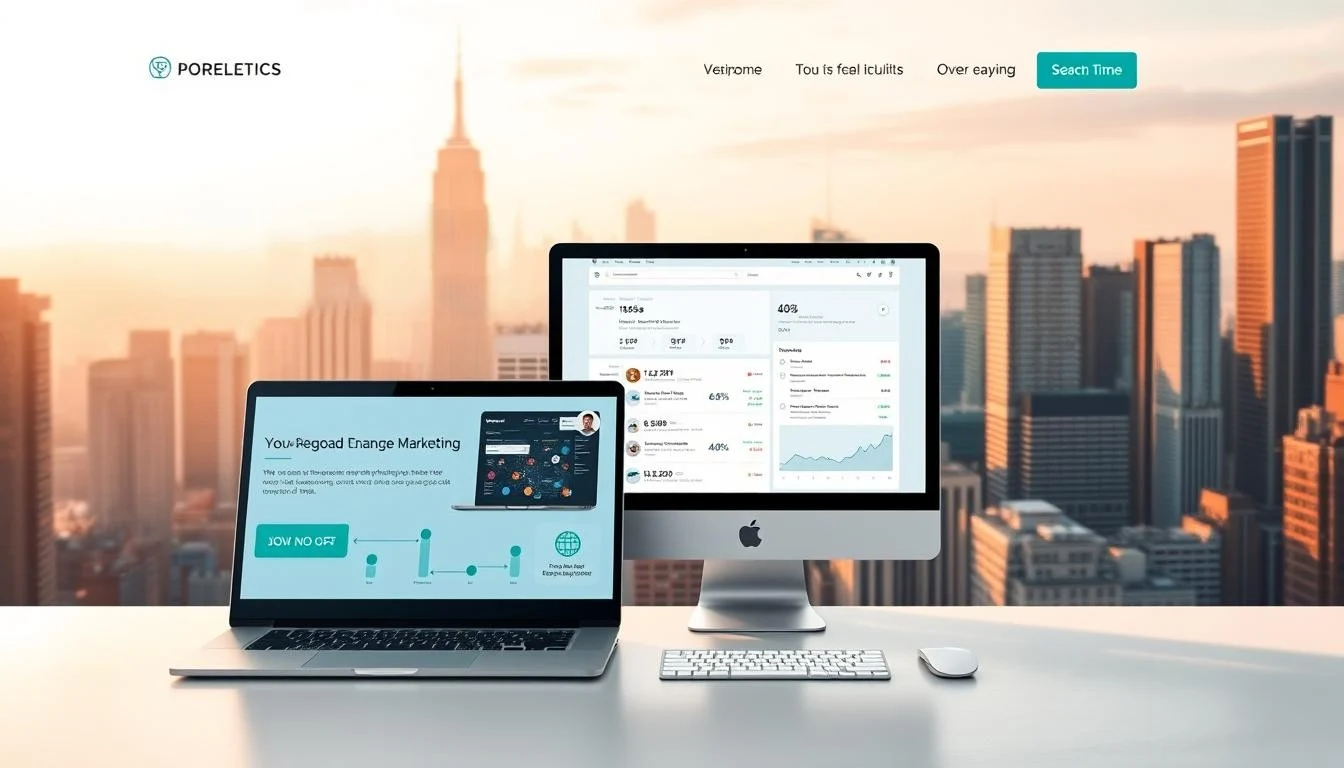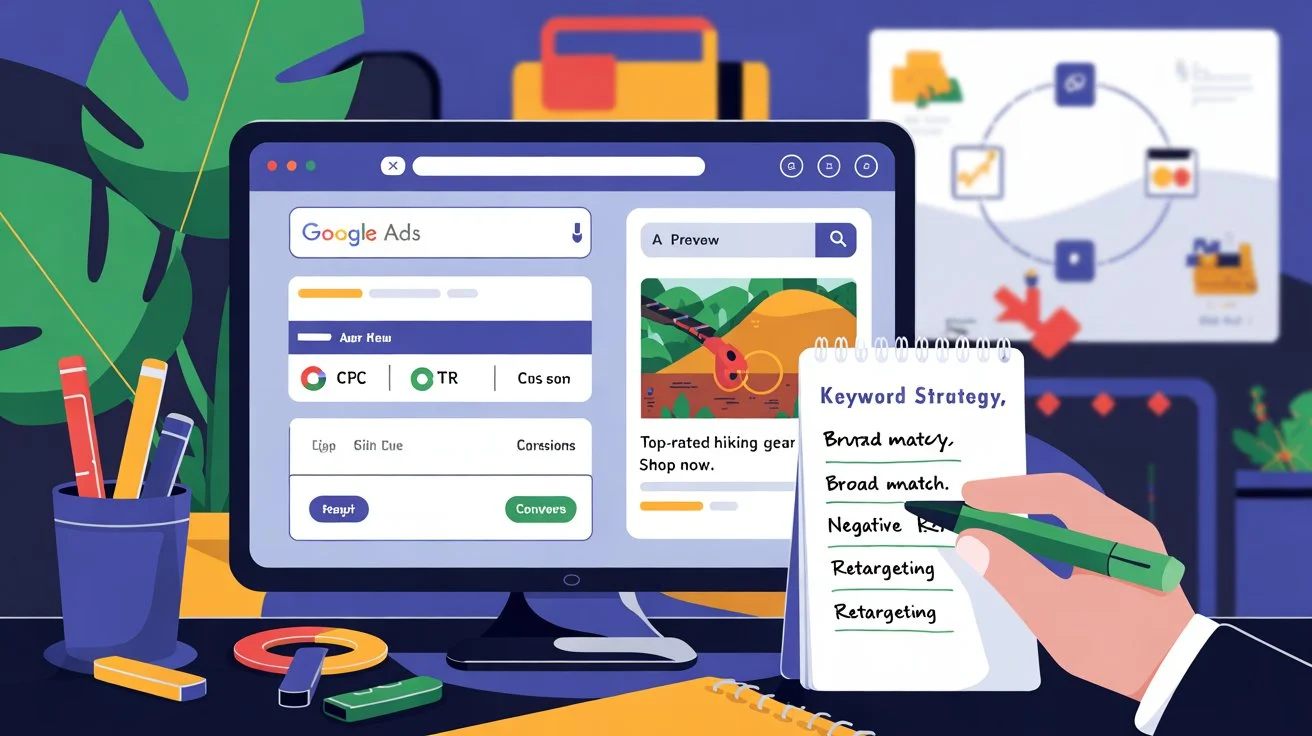Ever wondered why some businesses always show up first on Google while others don’t? The secret is search engine marketing. It can change your online presence in a day.
I’ve seen many businesses struggle to be seen online. But when they learn about the benefits of search engine marketing, everything changes. The Pew Research Center found that 91% of online adults use search engines to find what they need. This shows why SEM is key for any digital marketing strategy.

SEM boosts your brand’s visibility and drives more traffic with targeted ads. It’s different from regular ads because it reaches people who are already looking for what you offer.
In this guide, I’ll share sem strategies that really work. Whether you’re up against big names or starting from scratch, knowing these tips will help you stand out.
🧲 Don’t Just Run Ads — Run Campaigns That Print Money. Hire This SEM Freelancer
Table of Contents
Key Takeaways
- 91% of online adults rely on search engines for information, making SEM essential for visibility
- SEM connects businesses with customers actively searching for their products or services
- Effective SEM strategies can level the playing field between small businesses and large competitors
- Search engine marketing delivers measurable results and trackable return on investment
- SEM combines paid advertising and organic optimization for maximum online presence
- Strategic keyword targeting helps businesses reach their ideal customers at the right moment
Understanding Search Engine Marketing Fundamentals
Explaining search engine marketing to business owners, I highlight its power. It connects customers with your business online. This method uses various strategies to increase your visibility when people search for what you offer.
What Search Engine Marketing Encompasses
Search engine marketing is more than just ads. It involves keyword research, ad creation, bid management, and performance optimization across different digital platforms.
This approach ensures your online presence is maximized. You manage paid ads, optimize landing pages, and track data to enhance results. Every dollar spent helps your business grow.
SEM vs SEO: Key Differences Explained
The difference between sem and seo can be confusing. Search engine optimization aims to improve organic search rankings through content and website changes.
SEO builds long-term visibility, while paid search offers quick results. Paid ads show up at the top of search results right away. Organic search takes months to see big improvements.
Both sem and seo are great together. Smart businesses use paid search for fast results and SEO for lasting growth.
Major SEM Platforms and Their Features
Google Ads is the top sem platform, with over 90% of search traffic. It offers advanced targeting options, including:
- Geographic targeting for local businesses
- Device-specific campaigns for mobile or desktop users
- Audience targeting based on interests and behaviors
- Remarketing capabilities to re-engage previous visitors
Microsoft Advertising gives access to Bing users, often with lower costs. Both platforms work well with analytics tools, making it easy to manage and optimize campaigns for any business size.
Why is Search Engine Marketing Important for Business Success
Search engine marketing is key to business success today. It helps businesses connect with customers when they need what you offer. This has changed how businesses of all sizes set their marketing goals.
SEM has three main benefits for business growth. These benefits create a strong marketing system. It gives quick results and long-term value.

Instant Visibility on Search Engine Results Pages
SEM is great because it offers visibility in search results right away. Unlike organic methods, SEM puts your business at the top of search engine results pages quickly. This happens within hours of starting your campaign.
This quick visibility boosts your brand’s awareness and trust. Seeing your business at the top of search results makes people think of your brand as reliable and authoritative.
Precise Targeting of Your Ideal Customers
What I love about SEM is its ability to target exactly who you want. You can find your target audience based on what they search for, where they are, and when they’re most likely to buy.
This precise targeting means your marketing dollars work better. Instead of hoping for results, you’re reaching customers who are already looking for what you offer.
Measurable Results and ROI Tracking
SEM gives you clear results to track your return on investment. You can see who clicked your ads, which keywords worked best, and how much each customer cost. This is all down to the penny.
| SEM Benefit | Traditional Marketing | Search Engine Marketing | Business Impact |
|---|---|---|---|
| Visibility Timeline | Weeks to months | Immediate | Faster market entry |
| Targeting Precision | Broad demographics | Intent-based targeting | Higher conversion rates |
| Performance Tracking | Limited metrics | Real-time analytics | Data-driven optimization |
| Budget Control | Fixed commitments | Flexible daily limits | Better cost management |
This data-driven approach helps you know what’s working. You can adjust your strategies to meet your marketing goals and grow your business.
🔐 Unlock the Full Power of Paid Search With This Freelance SEM Genius
Core Benefits of Search Engine Marketing
Search engine marketing (SEM) is a game-changer for businesses of all sizes. It boosts revenue and improves market standing. For every dollar spent on AdWords, businesses get about $2 in return. This makes SEM a top choice for digital marketing.

Driving High-Quality Website Traffic
SEM draws in people who are looking for what you offer. This targeted method leads to higher conversion rates. Unlike random visitors, SEM traffic is made up of people ready to buy.
These prospects are already interested. They’ve searched for keywords related to your products. This means they’re closer to making a purchase.
Boosting Brand Awareness and Recognition
Your ads at the top of search results boost brand awareness. Even if people don’t click right away, seeing your name repeatedly builds trust. This familiarity grows over time.
Remember, 60% of searchers only look at the first page of results. SEM puts your brand in the spotlight, making it more recognizable to your audience.
Gaining Competitive Edge in Your Market
SEM makes it fair for businesses of all sizes. A well-run campaign can outrank bigger competitors. Smart keyword use and compelling ads can outdo bigger budgets.
Supporting Small Businesses Growth
Small businesses get a lot from SEM’s targeted approach. You can compete with big names by focusing on key local keywords. This way, you get the most out of your budget.
SEM helps small businesses build their online presence. You can start small, test what works, and grow your campaigns as you expand.
How SEM Generates Targeted Traffic and Conversions
SEM connects businesses with users at the right time. It turns casual searchers into loyal customers. By understanding search intent and quality factors, your campaigns can show real results.
Matching Search Intent with Relevant Keywords
Successful SEM campaigns start with knowing what users search for. When someone types specific keywords into a search engine, they’re showing their needs. I look at whether they’re looking for info, comparing options, or ready to buy.
This helps me create campaigns that match their search intent perfectly. Search queries tell us about user behavior. I use this to make targeted ads that meet their needs. This leads to higher engagement and better conversion rates.

Understanding Quality Score Impact
Quality Score is a key factor in SEM success. It helps you get better positions at lower costs. I’ve seen businesses cut costs in half and double their traffic by improving their Quality Score.
The secret is in better keyword relevance, compelling ad copy, and optimized landing pages. Higher Quality Scores mean lower costs per click-through. This improves your return on investment and makes your campaigns more sustainable.
Optimizing Click-Through Rates
Your click-through rate shows how well your campaign is doing. I test different headlines, descriptions, and call-to-action phrases. This helps find what works best with your audience.
A 1% increase in click-through rate might seem small. But it means hundreds more visitors each month. Higher rates also tell search engines your ads are valuable. This boosts Quality Score and leads to better performance at lower costs.
Step-by-Step Guide to Keyword Research for SEM
Keyword research is key to successful SEM campaigns. It helps you find the exact terms people search for when looking for your products or services.
Identifying Your Target Audience Search Behavior
Understanding your audience’s search behavior is the first step. I start by imagining what problems my customers face and how they describe them.
Look beyond just product names. Customers might search for symptoms, solutions, or comparisons. For example, instead of just “accounting software,” consider “small business bookkeeping help” or “track business expenses easily.”

Using Keyword Research Tools Effectively
I use three main tools for keyword research:
- Google Keyword Planner – Gives basic search volume and cost estimates
- SEMrush – Offers competitive insights and keyword suggestions
- Moz Keyword Explorer – Great for finding long-tail keywords
These tools show seasonal trends, related searches, and competition levels. I combine them for a full view of keyword opportunities.
Analyzing Search Volume and Competition
Finding the right keywords means balancing search volume and competition. I aim for terms with enough searches but not too competitive.
Finding High-Intent Keywords
High-intent keywords show someone is ready to act. I focus on terms with “buy,” “hire,” “near me,” or “best” and my services. Question-based keywords also reveal specific pain points to target.
Implementing Negative Keywords Strategy
Negative keywords keep your ads from showing for irrelevant searches. I regularly check search query reports to find terms that don’t match my goals. Then, I add these as negative keywords to improve targeting.
📉 Stop Wasting Ad Spend — Hire an SEM Pro Who Knows What Actually Works!
Creating Your First SEM Campaign
Starting a successful SEM campaign needs careful planning and attention to detail. I’m here to guide you through it step by step. Your first campaign is the base for all your future ads.
The setup has three key phases for success. Each phase builds on the last to make a strong ad strategy.
Setting Up Google Ads Account
Starting with Google Ads is easy, but your early choices matter a lot. Always start with conversion tracking to see what works right away.
Be smart about your billing and account permissions, if you’re working with a team. This makes managing your ad budget and team access easier later on.

Structuring Campaigns and Ad Groups
Many beginners make mistakes in campaign structure that hurt their results. I organize campaigns by product, service, or location for focus.
I make ad groups for each campaign with 5-15 keywords. This keeps ads relevant to what people search for.
This way, your ads match what users are looking for. It makes your ad more likely to get clicked.
Writing Compelling Ad Copy
Your ad copy is what turns searchers into customers. I aim to understand your audience and speak their language. This makes your message compelling.
Crafting Effective Headlines
Headlines need to grab attention and use keywords naturally. I write headlines that solve problems or offer benefits to get clicks.
It’s all about speaking your customer’s language. Your headline should make them think, “This is what I need.”
Creating Persuasive Descriptions
Descriptions should add value and clear calls-to-action. I highlight what makes your business stand out and why you’re the best choice.
Always test different ad versions to find the best ones. A good SEM campaign is always improving based on real data.
Advanced SEM Strategies and Techniques
Once you’ve got the basics down, it’s time to dive into advanced strategies. These sem strategies will take your campaigns from good to great. They make paid search advertising a game-changer for businesses.

Smart Bidding for Maximum ROI
Effective bid management is key to success. I use manual bidding for important keywords and automated strategies for others. This mix helps me get the best results.
Bid adjustments are where the magic happens. I raise bids for devices, locations, and times that work well. At the same time, I lower them for areas that don’t. This boosts campaign efficiency by 30-50%, making your money go further.
Maximizing Ad Extensions Impact
Ad extensions are your ace in the hole for search results. I add sitelink extensions for specific products, callout extensions for unique points, and structured snippets for more info.
These extensions do more than just show up in search. They increase click-through rates and Quality Scores. The power of search engines and smart extensions give you more visibility and credibility.
Winning Back Visitors Through Remarketing
Remarketing is a powerful but often overlooked paid search strategy. It targets people who’ve visited your site before, making them more likely to buy.
I set up different campaigns for different groups. This includes visitors who didn’t buy, past customers, and those who looked at high-value pages. SEM helps keep you in their minds as they shop online.
“The best marketing strategies don’t just reach new audiences—they reconnect with interested prospects who aren’t ready to buy yet.”
These advanced methods turn any advertiser into a pro. They deliver the results that make search engine marketing so valuable for business growth.
💡 SEM Isn’t a Gamble — If You Hire the Right Freelancer Who Knows the Odds
Optimizing Landing Pages for SEM Success
I’ve found that how well your landing page performs is key to getting value from SEM. It’s the last chance for visitors to decide to buy or leave. Campaign optimization means always checking and tweaking your SEM campaigns to get better results, but the landing page is the most important part.
By optimizing your landing pages, you turn clicks into customers. This process focuses on three key areas that can make or break your online marketing.

Matching Your Message Perfectly
I make sure my landing page content matches my ad copy perfectly. When someone clicks your ad, they expect to see what you promised. This builds trust right away.
Your headline should match the ad’s promise. The message should flow smoothly from the start. This makes visitors more likely to convert and helps your business reach the right people.
Speed and Mobile Performance Matter
How fast your page loads affects your Quality Score and Google Search rankings. I use image compression, minimize code, and choose reliable hosting for quick loading times.
Most searches are on mobile, so I design with mobile in mind. Buttons should be easy to click, forms simple to fill out, and the whole experience should work well on small screens. This mobile focus boosts your visibility in search results.
Track Every Conversion
I track every important action, like purchases, form submissions, phone calls, and email sign-ups. This shows me which parts of my SEM efforts work best for my business.
Regular A/B testing of headlines, calls-to-action, and form layouts helps me get the most from each visitor. Even small improvements can double your return on investment without spending more on ads.
Measuring and Analyzing SEM Campaign Performance
Knowing how to measure SEM campaign success is key to using your marketing budget wisely. It helps you get better visibility in search. The power of search engine marketing shines when you turn data into useful insights. As an experienced marketer, I’ve found that tracking performance is what makes campaigns successful.
Key Performance Indicators You Must Track
I always keep an eye on click-through rate to see how my ads grab attention. Conversion rate shows how well my landing pages convert visitors into customers. Cost-per-conversion tells me if my campaigns are profitable and helps me decide where to spend my budget.
Quality Score is vital for ad position and cost. I also track impression share to see how often my ads show up for target keywords. Average position shows my ranking compared to competitors at the top of search.
Building Analytics and Reporting Systems
Setting up analytics is the first step to making smart choices. I link Google Ads with Google Analytics to see how users behave after clicking my ads. This shows which SEM campaigns offer the most engaged visitors and highest value.
Custom dashboards show the metrics that matter most to my business goals. Automated reports keep everyone updated without info overload. This way, every campaign detail gets the attention it deserves.
Turning Data Into Winning Strategies
Decisions based on data take patience and discipline. I don’t make changes on a whim or based on short-term trends. Instead, I wait for solid data before tweaking bids or stopping underperforming keywords.
I review performance weekly to spot trends. Monthly, I dive deep into audience data to find new chances. This careful analysis of SEM efforts leads to better google search results and more profitable campaigns.
SEM Budget Management and Cost Optimization
Effective SEM budget management turns every dollar into growth. You don’t need a lot of money to see results. I’ve helped businesses succeed with just $300 a month.
SEM is cost-effective because you only pay when someone clicks on your ads. This model avoids spending on views that don’t lead to action.
Determining Your Marketing Budget Allocation
Start with a strategic budget plan that balances risk and chance. Use 60% for campaigns that work well. Save 30% for trying new things.
Use the last 10% for remarketing to bring back old visitors. This mix keeps things steady while looking for new ways to grow.
Controlling Cost-Per-Click and Ad Spend
Controlling ad spend means using tools and being proactive. I set bid caps and use dayparting to show ads when they’re most effective. I also adjust bids for different places.
Don’t forget SEM uses many platforms. Testing different engines like Google and Bing can find cheaper, less competitive options.
Maximizing Return on Investment
True cost-effectiveness comes from always improving based on data. I look at which keywords and ads are the cheapest to get results. Then, I spend more on those.
“The key to SEM success isn’t spending more—it’s spending smarter on what works.”
Tracking conversion value helps focus on customers who spend more. This method can bring 300-500% ROI for businesses that treat every decision as an investment.
📈 The #1 Secret Behind Scalable Ad Campaigns? Hiring the Right SEM Pro
When to Partner with SEM Professionals
I want to be honest with you about when it makes sense to bring in professional help for your SEM efforts. Modern digital advertising is complex. It often needs expertise that takes years to develop.
Running successful sem campaigns while managing your business can become overwhelming quickly. Sometimes the smartest investment is recognizing when expert help will deliver better results.
Recognizing When You Need Expert Help
Several clear indicators suggest it’s time to seek professional assistance. Your campaigns have plateaued despite your optimization efforts. You’re spending significant budget without seeing proportional returns.
You simply don’t have time to manage campaigns effectively while running your business. The technical aspects of bid management and conversion tracking feel overwhelming.
Modern sem involves multiple platforms and sophisticated automation that requires dedicated expertise to master. If these challenges sound familiar, professional help makes sense.
Benefits of Working with Marketing Agencies
Working with a marketing agency or marketing experts brings immediate advantages. They provide access to premium tools and proven strategies across multiple industries.
Professional teams can scale campaigns quickly based on what works. They’ve seen what succeeds across hundreds of campaigns, helping you avoid costly mistakes.
| In-House Management | Professional Partnership | Key Advantage |
|---|---|---|
| Limited tool access | Premium software suite | Advanced analytics |
| Single perspective | Multi-industry experience | Proven strategies |
| Time constraints | Dedicated focus | Consistent optimization |
| Learning curve | Immediate expertise | Faster results |
“The right professional partnership can transform your SEM performance, helping you achieve higher positions in search results and more predictable growth.”
Accelerating Your SEM Results with Expert Help
If you’re looking to accelerate your SEM results, consider hiring experienced freelancers who specialize in search engine marketing to help develop an sem strategy.
These professionals stay current with platform updates and industry best practices. They can help you rank higher in search through specific marketing techniques that deliver measurable results.
The investment in professional expertise often pays for itself through improved cost efficiency and better campaign performance.
Your Search Marketing Journey Starts Now
I’ve shown you the world of search marketing. Now, you see why SEM is key for growing your business. Search engines connect your business with customers when they need what you offer.
People search online every day. Your SEM campaigns can grab this traffic. Each ad you make could show up on the search page where your customers are looking. This makes SEM stand out from other marketing.
Remember, SEM is important because it shows real results. You can see every click, conversion, and dollar spent. This helps you avoid wasting money on bad keywords and focus on what works.
Starting your first campaign might seem tough, but you’re ready. Start with good keyword research, make catchy ads, and try different things. Small businesses can really benefit from SEM, competing with big companies on the same page.
Your success in search marketing comes from always improving and learning from your data. The online world changes, but those who get the basics will keep doing well. Start your SEM strategy today.
FAQ
What is the difference between SEM and SEO?
SEM and SEO both aim to improve your search visibility. SEO focuses on organic rankings through content and technical improvements. It’s like a marathon for long-term results. SEM offers immediate visibility through paid ads. It’s like a sprint to the top. SEM includes both paid search ads and organic optimization, while SEO targets unpaid rankings.
How much should I budget for my first SEM campaign?
Start with a test budget of $300-500 per month. This helps gather data without risking your budget. It’s a chance to prove ROI before scaling up. I allocate 60% to proven campaigns, 30% to new keywords, and 10% to remarketing. The pay-per-click model means you only spend when someone acts.
What makes a good Quality Score in Google Ads?
Quality Score boosts performance and cost-effectiveness. It rewards relevant, useful ads with better positions and lower costs. A good score comes from matching keywords with compelling ad copy and optimized landing pages. Improving Quality Score can cut costs and double traffic. It’s about relevance and user experience.
How quickly can I see results from search engine marketing?
SEM offers instant visibility. Your business appears at the top of search results immediately. You can see clicks and traffic within hours. Allow 2-4 weeks to gather conversion data for meaningful optimization. This ensures statistical significance in your metrics.
Which search engines should I focus on for SEM campaigns?
Google Ads should be your main focus. Google dominates search volume. But don’t overlook Microsoft Advertising (formerly Bing Ads). Testing engines like Google and Bing can reveal opportunities with lower competition and costs. Consider social media platforms that integrate with search, depending on your audience and goals.
What are the most important metrics to track in SEM campaigns?
Key metrics include organic search results and conversion rates, click-through rate, cost-per-conversion, and Quality Score. I also track impression share, search term reports, and return on ad spend. These metrics help understand ad performance and campaign effectiveness.
How do I choose the right keywords for my SEM campaigns?
Understand your audience’s search behavior and the words they use. Use tools like Google Keyword Planner and SEMrush to analyze search volume and competition. Focus on high-intent keywords that indicate action. Use negative keywords to avoid irrelevant searches.
What’s the typical return on investment for SEM campaigns?
Businesses often see $2 in returns for every $1 spent on SEM. Results vary by industry and optimization. My approach has helped businesses achieve 300-500% ROI. The key is to treat each campaign decision as an investment. It must prove its worth through measurable results and continuous optimization.
Should small businesses invest in search engine marketing?
Absolutely! SEM levels the playing field for small businesses. Even with smaller budgets, a well-optimized SEM campaign can outrank bigger competitors. I’ve seen small businesses appear alongside giants and capture market share they never thought possible.
How do I optimize my landing pages for better SEM performance?
Landing page optimization is key for SEM success. Align your landing page content with your ad copy. Ensure a fast page load speed and mobile experience. Implement proper conversion tracking and regularly test elements like headlines and calls-to-action. This maximizes conversion rates.
When should I consider hiring SEM professionals?
Hire professionals when your campaigns plateau, or you’re spending a lot without returns. They bring expertise, tools, and strategies to scale campaigns quickly. They stay updated with platform changes and best practices, giving you an edge in search results.
What are ad extensions and why are they important?
Ad extensions help you dominate more space in search results. They provide additional value to customers. I use sitelink, callout, and structured snippet extensions. These extensions improve visibility, increase click-through rates, and boost Quality Scores. They make your marketing more effective.
Related Articles:
- What is Generative Engine Optimization (GEO): The Revolutionary Shift in SEO?
- SEO: How Important is Search Engine Optimization?
- Local Search Engine Optimization Guide: Improve Your Local SEO Ranking
- eCommerce SEO Service: Your Top eCommerce SEO Agency for Online Retailers
- Video SEO Service: YouTube Search Engine Optimization, Boost Your Online Visibility
This post contains affiliate links, which means I may earn a commission if you make a purchase through these links. There is no additional charge to you! Thank you for supporting my blog so I can continue creating free content each week!





